With
intimations of spring in the air, the first jazz festival of the
year is a guaranteed upper. And when the thermometer nudges above
zero and the snow begins to melt, the vibe is even better.
This
year, the weather Gods heard and voluptuously responded to our
collective prayers, and delivered temperatures that made it difficult
to sustain my atheism. For the opening evening of the 12th edition
of Jazz
En Rafale, the mercury soared to an unprecedented
26 degrees Celsuis (79 Farenheit), a mere 24 above normal. I was
almost late for the opening: I had to doff ten pounds of winter
wear before embarking on a protracted sandal search and emergency
application of Sunscreen 200.
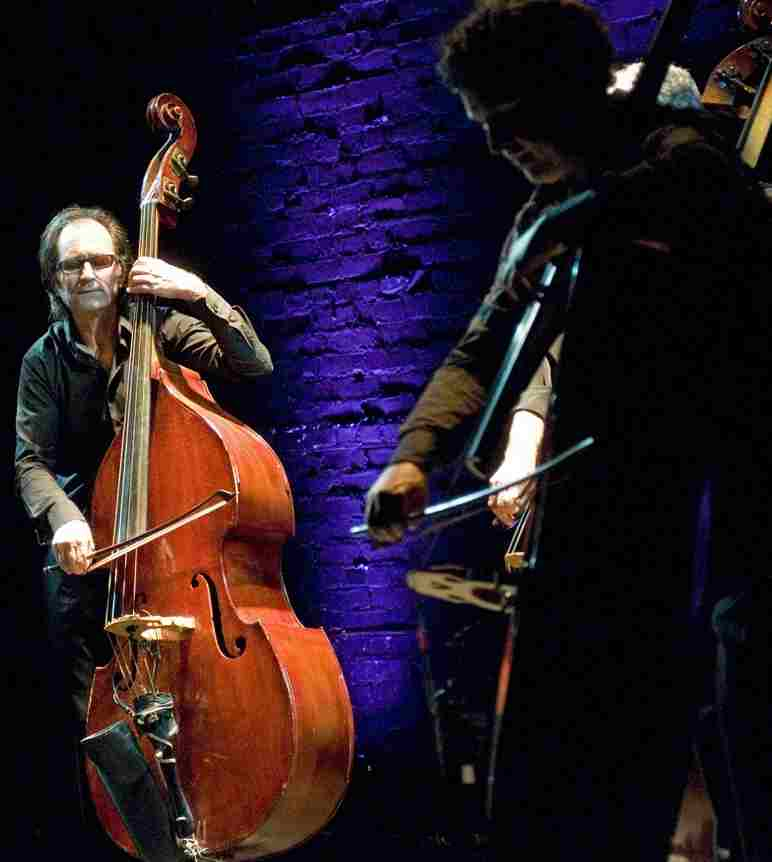
BACK
TO BASS-ICS
This
year, the festival organizers bravely decided to highlight the
upright or double bass, whose muted sound leaves most listeners
either indifferent or frustrated, since the average ear finds
it difficult to separate notes that seem to originate at the bottom
of a mine shaft. Thus, the 2012 edition of Jazz En Rafale was
an 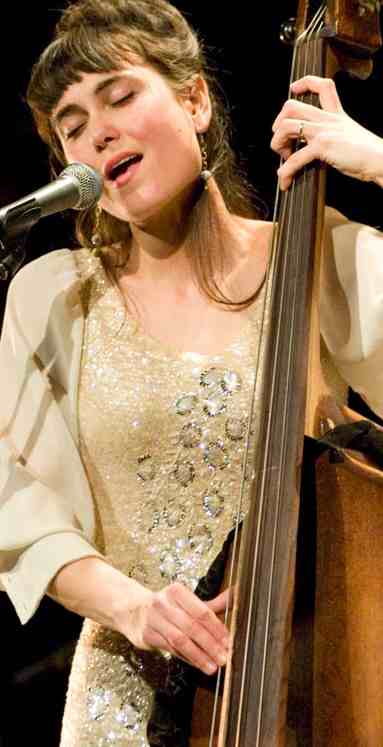 opportunity
to get to know the bass better, meaning learning how to better
situate its role in the context of a trio, quartet or larger.
opportunity
to get to know the bass better, meaning learning how to better
situate its role in the context of a trio, quartet or larger.
To make
peace with the bass is to recognize that its generic sound [1]cannot
produce the lyricism generated by all the other instruments. Which
isn’t to say that when played in the upper register -- infringing
on the cello’s territory -- it can’t produce gorgeous
tone and melody. The key is to acknowledge the instrument’s
limitations (the note’s slow decay), and the importance
of leaving sufficient space between the notes: no muffle will
travel. Of the 25 or so bassists that performed during the festival,
Vancouver’s Brandi Disterheft best demonstrated the understanding
and feel required to bring out what is best in music’s most
unwieldy instrument, and left no doubt that she is Canada’s
answer to Esperanza Spalding in all the A-major categories: musicianship,
composition, vocals and enchanting stage presence. During her
solos, the studied and respectful posture of her band mates said
it all: that she can play with anyone.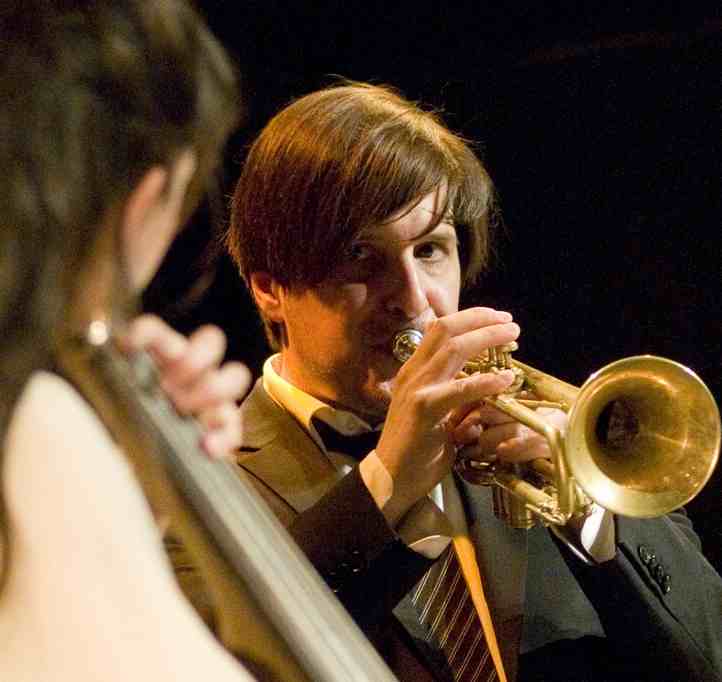
This
year the programmers, Alain Bedard and Carole Therrien, intrepidly
decided to open up the jazz concept and make room for music that
purists might take umbrage at: Brahms, cold fusion and blasts
of metal.
The six
bassists who make up L’Orchestre de Contrebasse de France,
in a memorable opening concert, set the tone for the unsuspected
possibilities of the bass as a lyrical instrument. Combining entertainment
with brilliant musicianship, theirs was definitely a festival
highlight in no small part owed to the fact that 70% of the playing
was executed with the bow. The huge volume of the instrument made
it an ideal percussive accompaniment which this group delivered
in spades. No surprise to learn that L’Orchestre has toured
the world and its six members are the instrument's premier ambassadors.
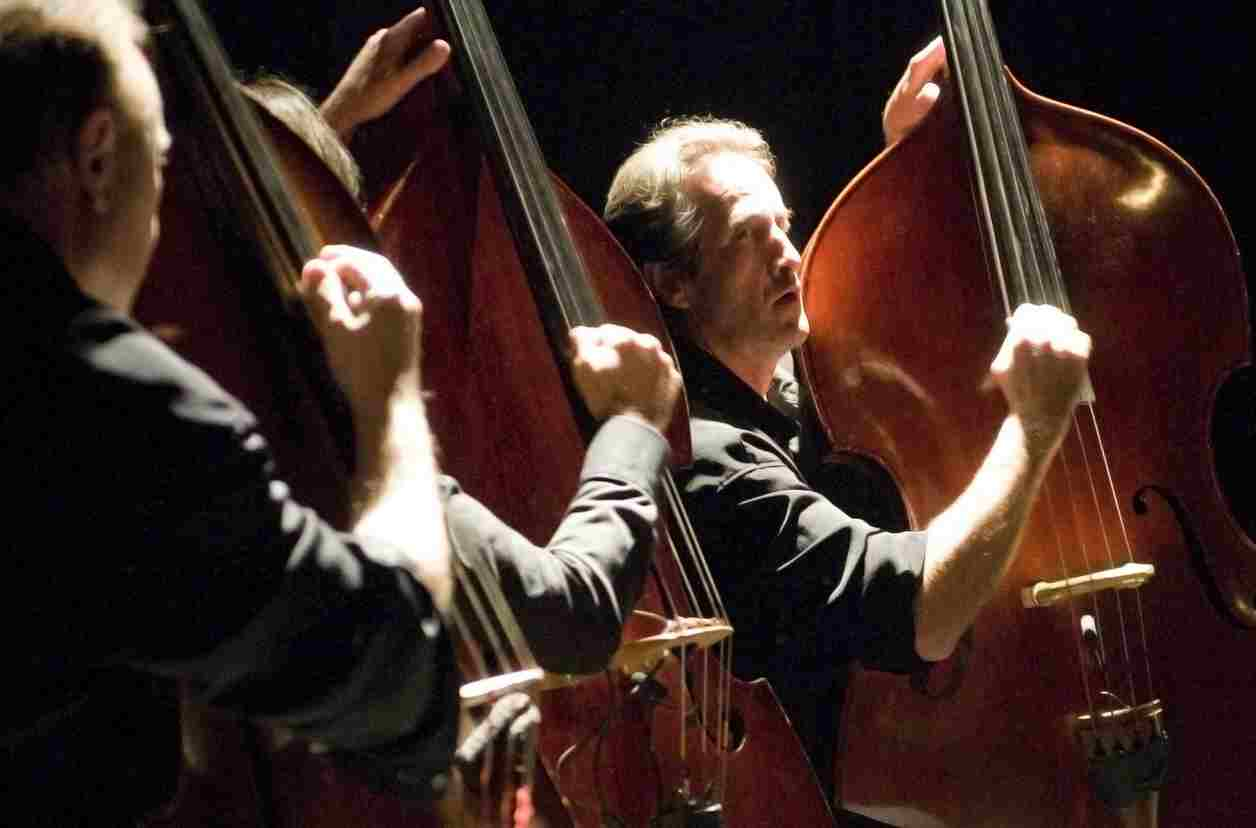
As mentioned
above, the festival featured a classical concert with duo Joel
Quarrinton and pianist Jean Mesmarais. The organizers wisely shifted
the venue from the jazz-friendly l’Astral
to the Chapelle-Historique du Bon-Pasteur (formerly a Church)
to better accommodate Brahm’s Violin and Piano Sonata expertly
transcribed for the double bass.
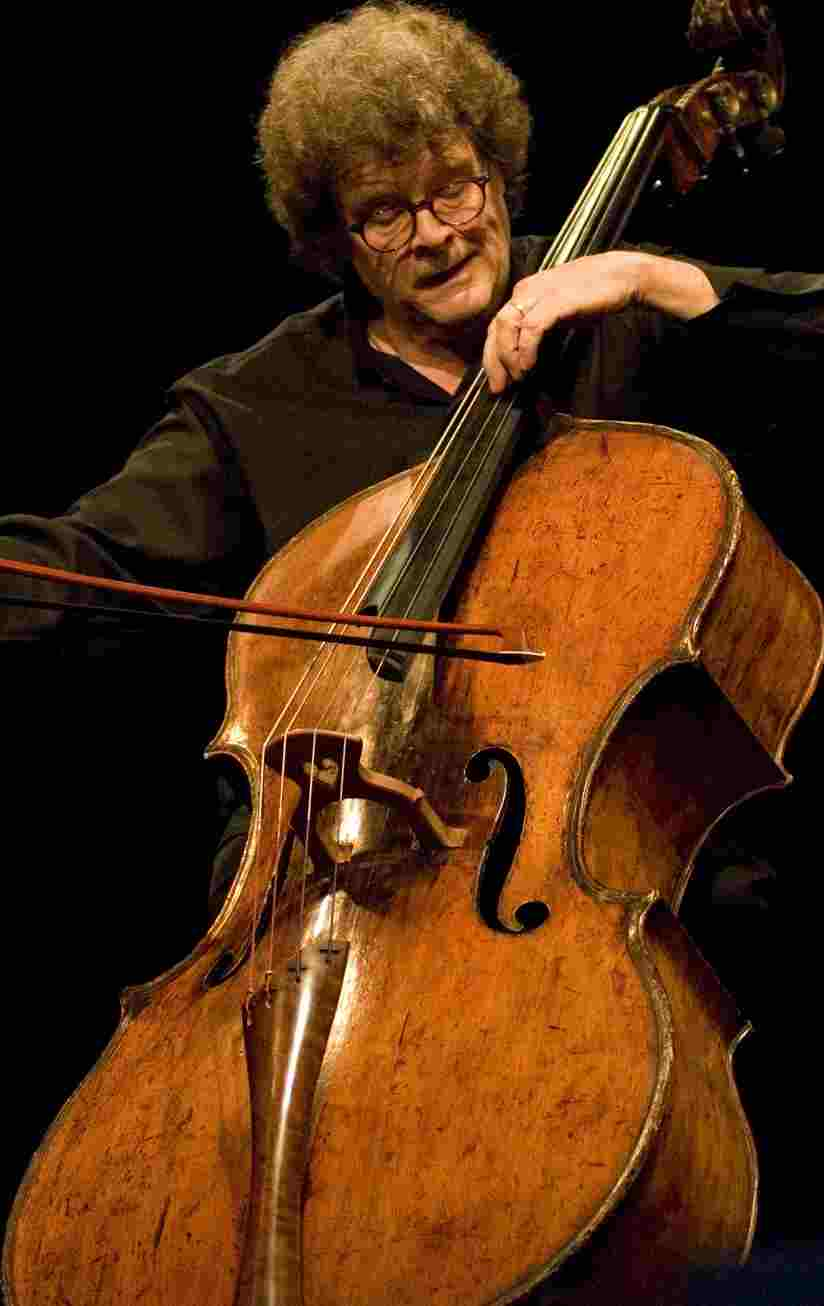
Among
the many highlights of this year’s festival was the hypnotic,
gripping fusion display from the Ben Allison band, who, for his
latest album (Action-Refraction, 2011), brought together
two guitarists (Brandon Seabrook and Steve Cardenas) with diametrically
opposed styles and sounds: the latter playing haunting, single
note intervals against the sometimes squeaky, squeamish, frenzied
clusters delivered by Seabrook, who also broke new ground with
the banjo. This was one of the most effective uses of the double
guitar concept I’ve ever heard and hope to hear again soon.
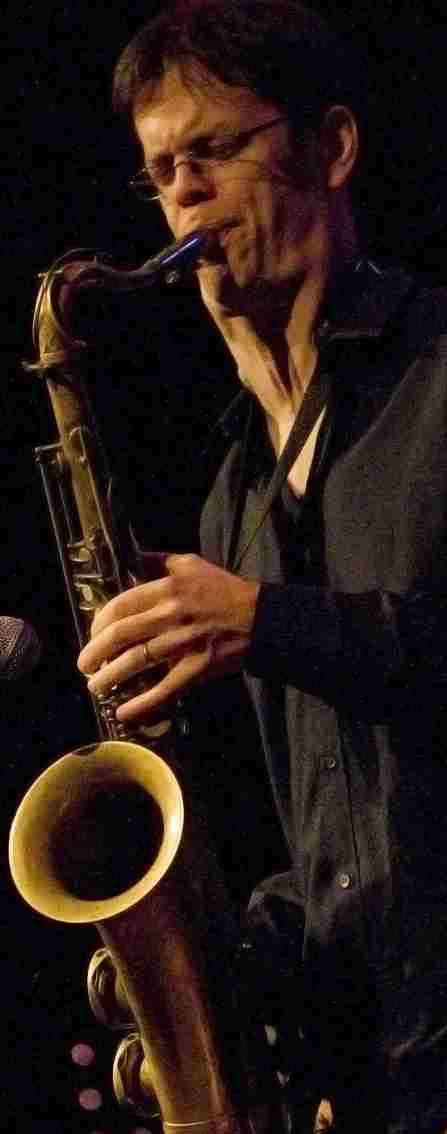 It
would be a shame not to mention Donny McCaslin, who delivered
a very satisfying set of music that was warmly greeted by one
of the few near-capacity crowds.
It
would be a shame not to mention Donny McCaslin, who delivered
a very satisfying set of music that was warmly greeted by one
of the few near-capacity crowds.
The biggest
applause was reserved for Alain Caron and his hard hitting Septentrion
fusion band playing music from their latest eponymous CD. Just
back from a lengthy European tour, for those of us who had lost
it, they restored our faith in fusion and reminded us of how vital
and exciting it can be in the hands of exceptional musicians.
Among
the many notable bassists that showed us how it’s done,
I single out Dave Young, who was invited to play with Remi Bolduc,
the latter fittingly honoured to be in the former’s company.
From the outset, Young, who has played with the likes of Oscar
Peterson, was dead-on the note and beat and needed all of 30 seconds
to let us know why he is world class. Kudos to Ben
Allison who, in his chording, spacing and shaping of sound to
suit his electric alt/metal-jazz-rock, delivered a lesson on making
the bass serve the concept.
For the
7th consecutive year, Jazz En Rafale held a competition dedicated
to encouraging and developing up and coming jazz musicians. I
was expecting the judges, with the emphasis on technical ability,
to go with the Charles Trudel Trio, who were the runners- up,
and was pleasantly surprised when The Becky Noble Quartet was
declared the winner. I would have been even more surprised had
they picked the group Toundra for its cohesion and invention.
As usual, the kids were more than alright and a reminder that
the future of jazz is in good hands.
For its
programming diversity, this was Jazz En Rafale’s best year
yet. What it has to do is publicize the event better: there were
too many evenings with too many empty seats for music that, without
exception, was exceptional from beginning to end.
Put these
names on your list for must see: Ben Allison and Brandi Disterheft.